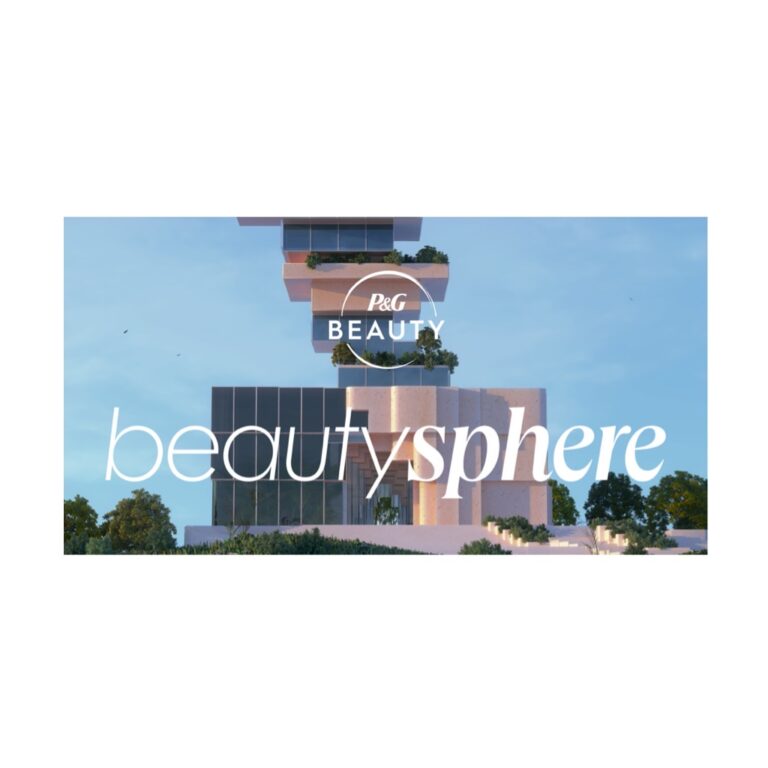
P&G uses BeautySphere to foray into the metaverse
P&G has forayed into the metaverse with BeautySphere, a virtual storytelling world. It is in a bid to influence consumers who are difficult to reach by traditional marketing.

P&G has forayed into the metaverse with BeautySphere, a virtual storytelling world. It is in a bid to influence consumers who are difficult to reach by traditional marketing.
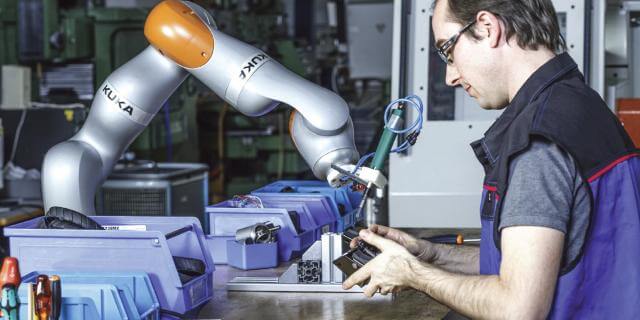
According to The Association for Packaging and Processing Technologies (PMMI), there is an increase in the intelligence, mobility, and sensing capabilities of cobots and robots.
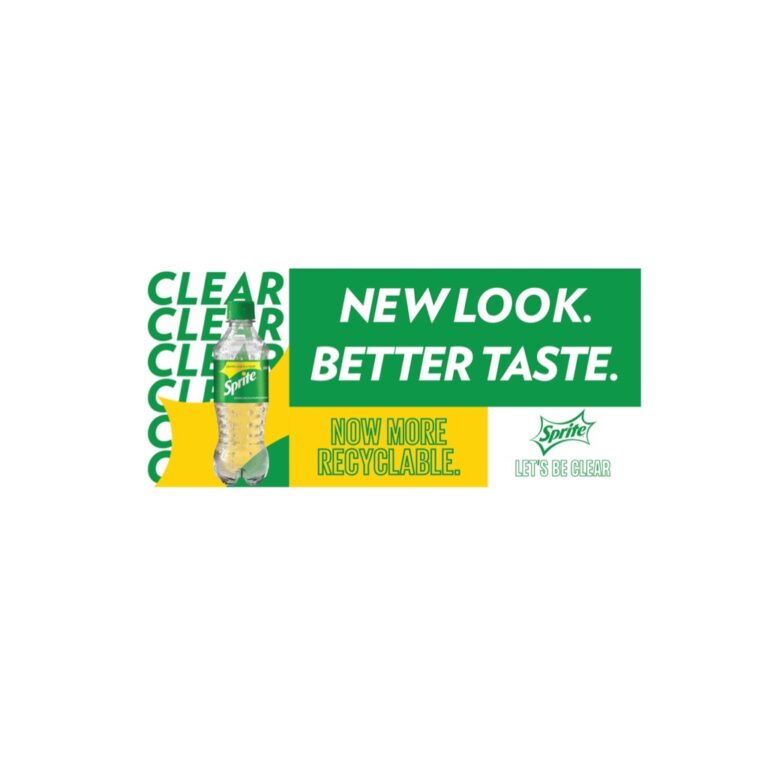
Sprite has decided to forgo its green bottles for white plastic ones from August to reduce waste.
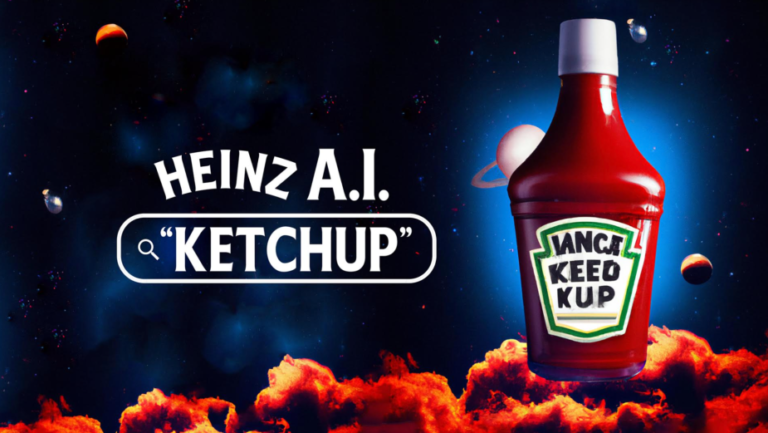
With the help of Rethink, Kraft Heinz recently joined the AI Craiyon, previously called Dall-E 2, as an extension to its “Draw Ketchup” campaign.
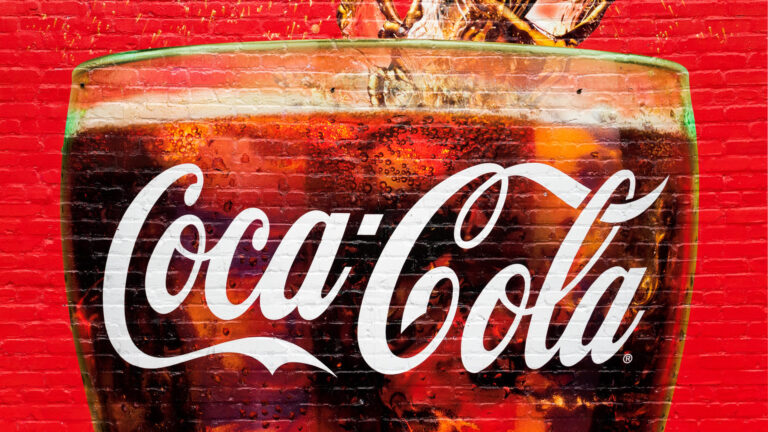
Coca-Cola has established a digital academy to up-skill employees, training 500 people in the first year, which has increased productivity by 20%.
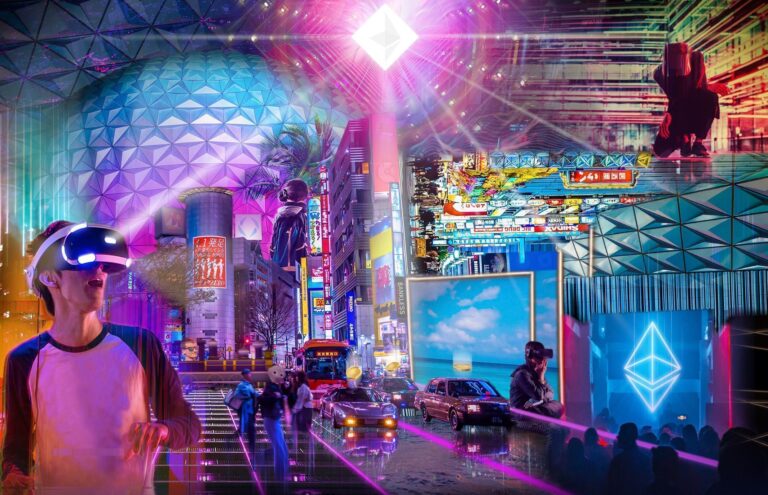
The “metaverse”—a term used to refer to the vast, interconnected virtual worlds that are beginning to emerge—could be the next trillion-dollar opportunity for tech companies. The majority of the companies are investing in the development of highly immersive virtual spaces that will allow consumers to earn, spend their money, and invest in products and services.
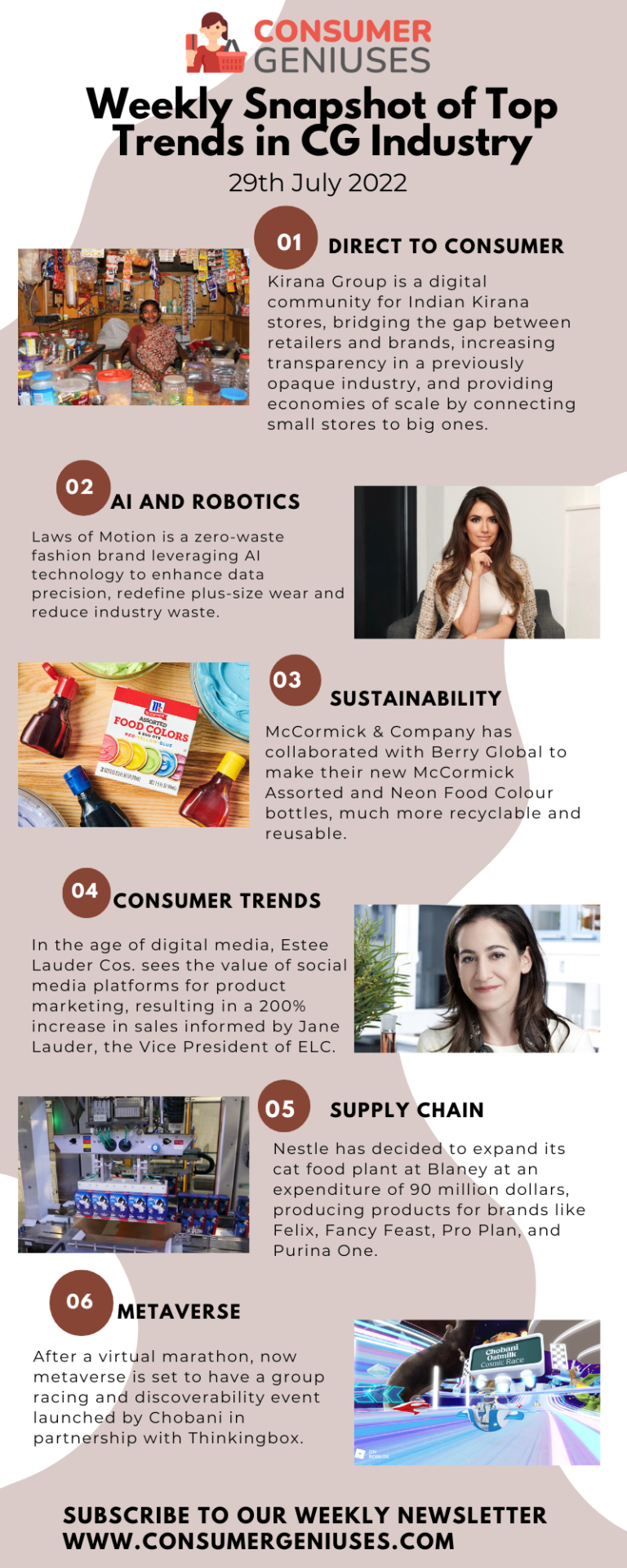
This is the weekly snapshot of top trends from the Consumer Goods industry in the past week (25th July-29th July). We have covered different categories, including:

It has been estimated that there is a yearly 92 million tons of waste just from the textile industry.
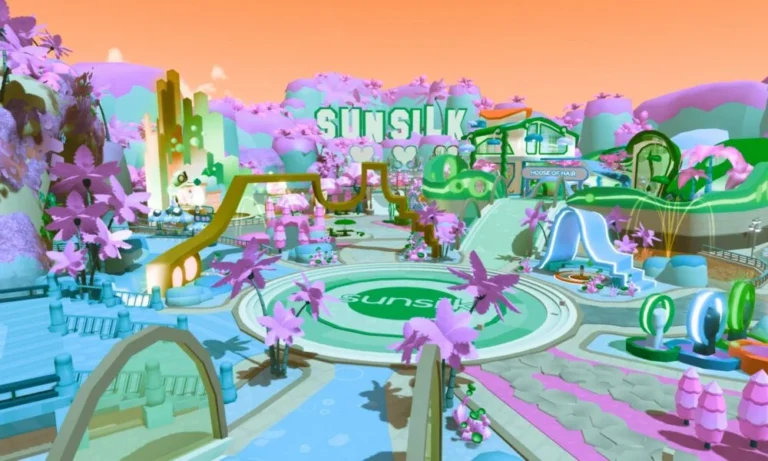
Unilever has ventured into the metaverse with several brands under its name.
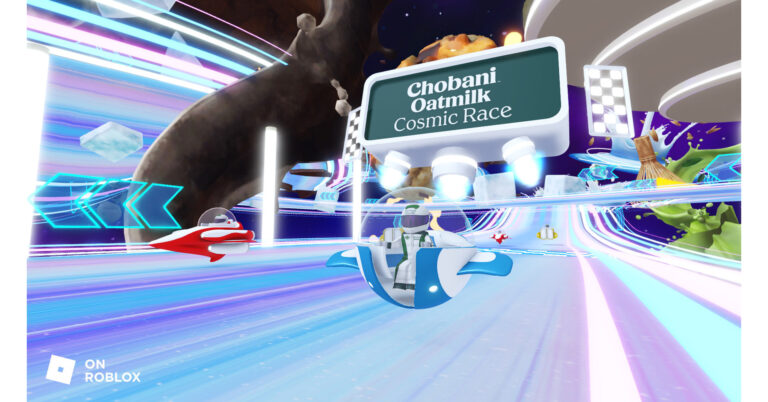
After a virtual marathon, now metaverse is set to have a group racing and discoverability event launched by Chobani in partnership with Thinkingbox.
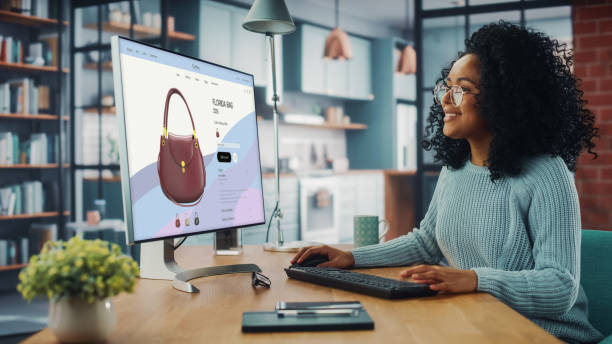
Many CPG companies have faced losses due to shipping and advertising costs after COVID-19 forced them to go online. Some steps can be taken to improve e-commerce.
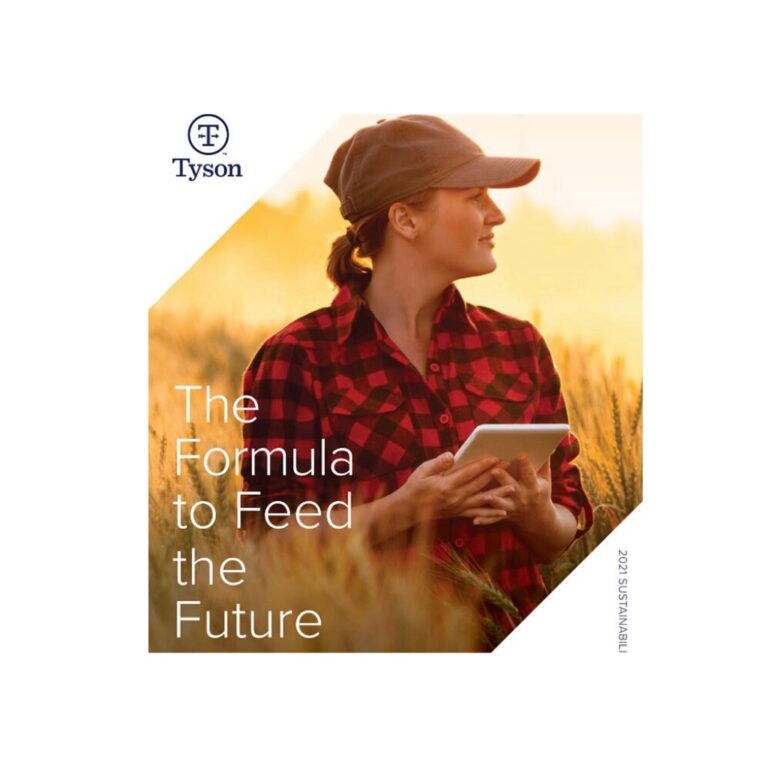
Recently Tyson Foods released its 2021 (FY21) Sustainability Report according to which it claimed to be working as a part of a global food system that produces accessible, affordable, and nutritious food.
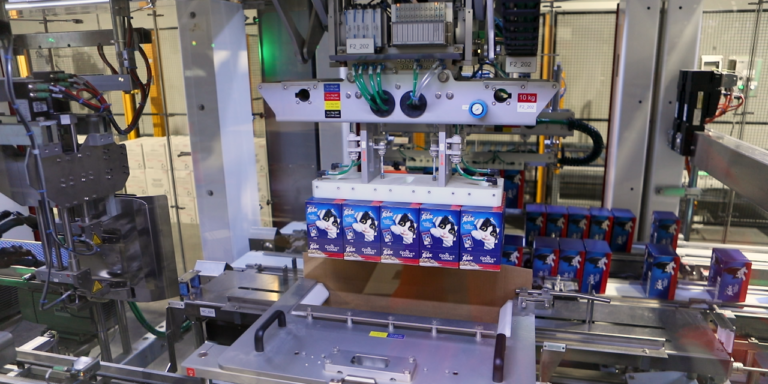
Nestle has decided to expand its cat food plant at Blaney at an expenditure of 90 million dollars.
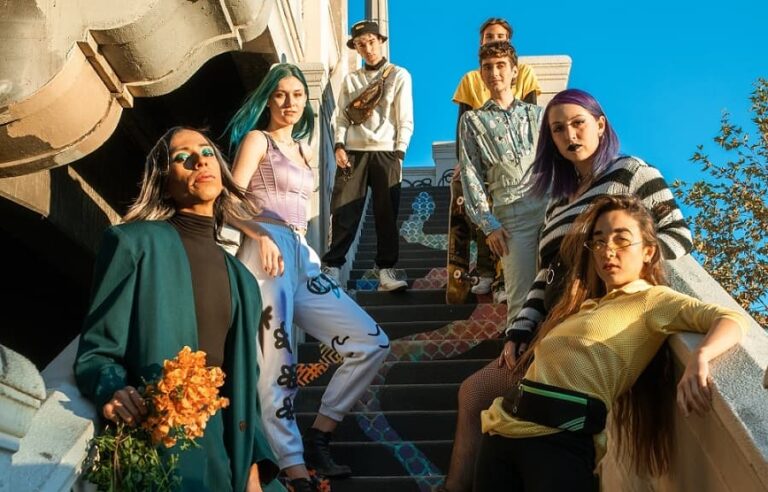
Gen Z consumers exhibit a higher degree of financial independence and diversity than previous generations.

This is the weekly snapshot of top trends from the Consumer Goods industry in the past week (18th July-22nd July). We have covered different categories, including:
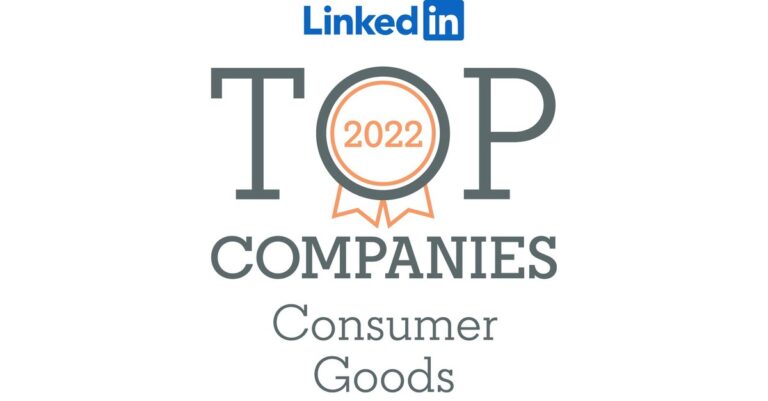
LinkedIn recently launched a list of the five best CPG companies.
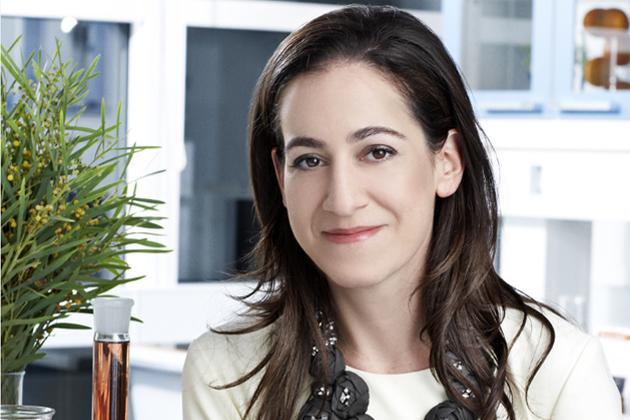
Jane Lauder, the Vice President of Estee Lauder Cos., talked about the company’s social media presence.
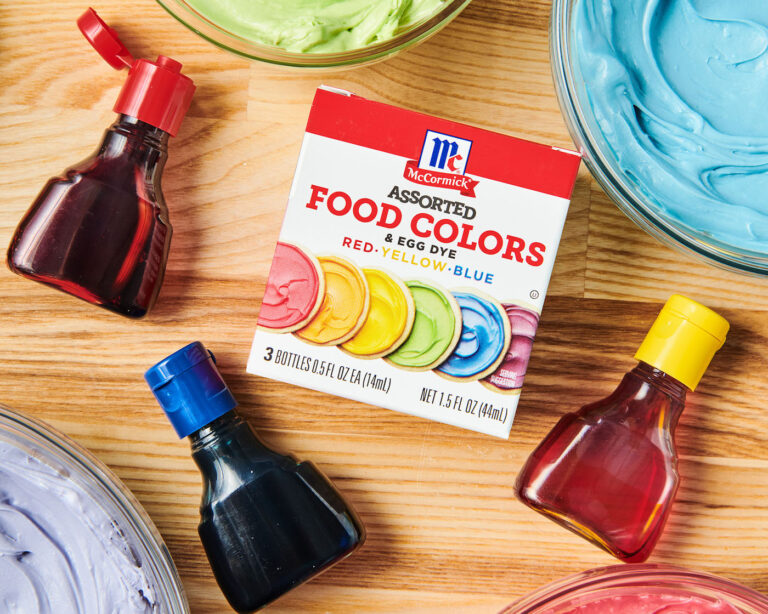
McCormick & Company has collaborated with Berry Global to make their new McCormick Assorted and Neon Food Colour bottles, much more recyclable and reusable from 100% post-consumer recycled (PCR) plastic, specifically recycled polyethylene terephthalate (rPET).

According to a consensus, the global fashion space is bound to pass $3 trillion in expenditure by 2023.
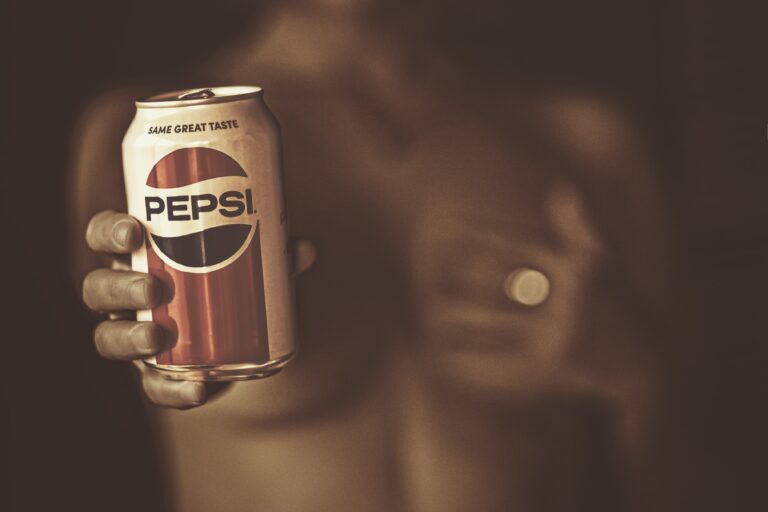
According to PepsiCo’s 2021 ESG Summary, cutting out sugar, sodium, and saturated fats in foods and drinks is their primary goal.
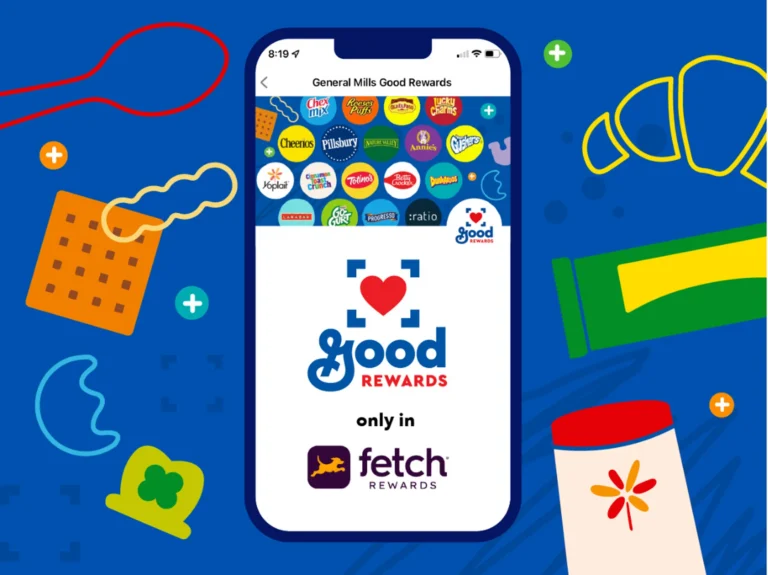
The good Rewards loyalty programme has been launched with the collaboration of Fetch Rewards and General Mills.

In a bid to replace the aluminium-based barrier, Tetra Pak is testing fibre-based layer in its cartons because aluminium contributes to carbon emissions while being not a favourite with recyclers and for being unable to sustain vegetable juice as evidenced from the 15-month-long consumer test held in Japan in 2020 by the company.
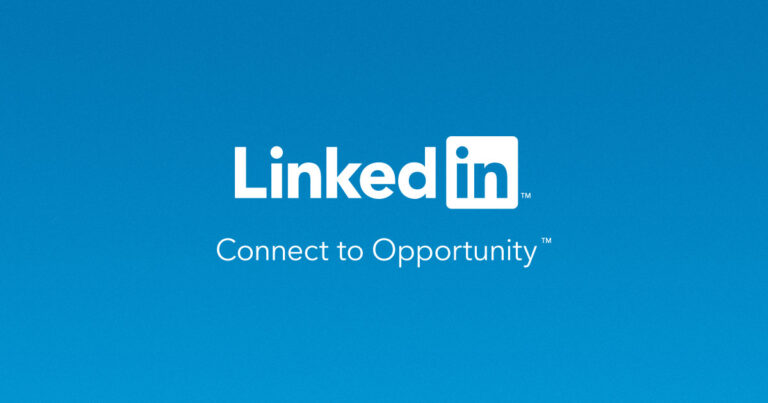
The majority of B2B brands use LinkedIn for marketing and many intend to increase their activity on the website.

Herbert W. Franke, a digital artist visualising math as art, became a sensation with his art piece Mondrian (1979) hosted by blockchain company Tezos at Art Basel.
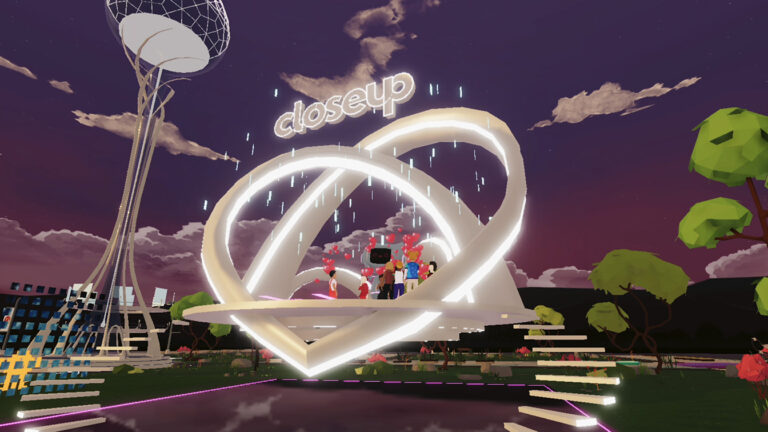
Unilever shared its strategy about metaverse and Web3 which is still in its infancy.
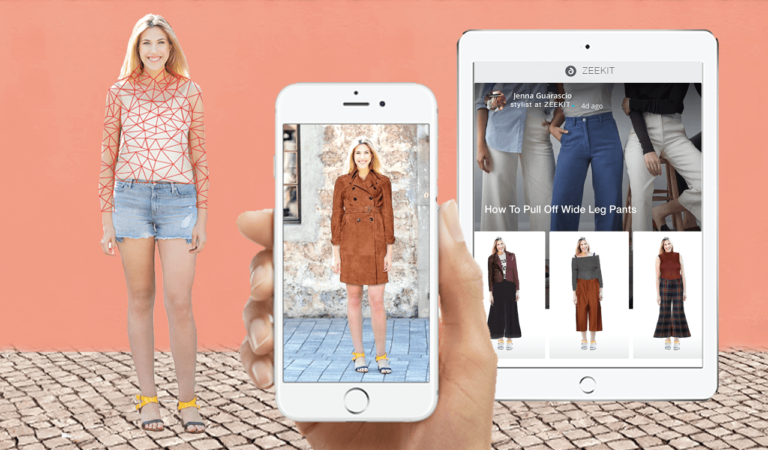
Walmart has been introducing innovative digital experiences for several years, including augmented reality (AR). In the previous year, the retail giant achieved the following targets.
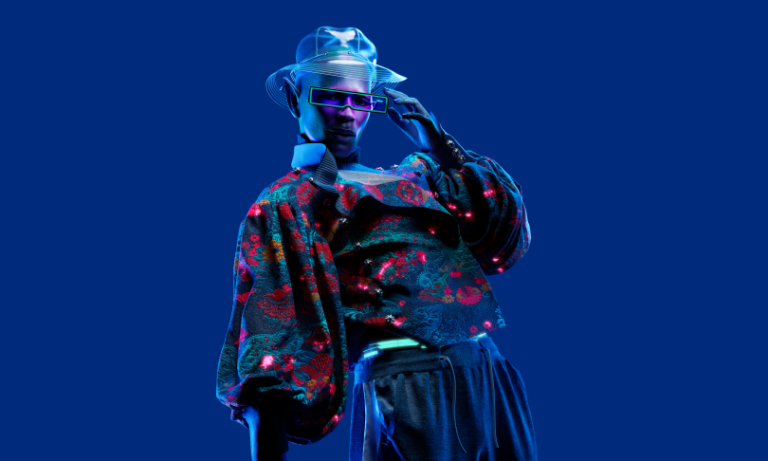
A number of pioneers in the metaverse have suggested that fashion brands should invest in virtual worlds.
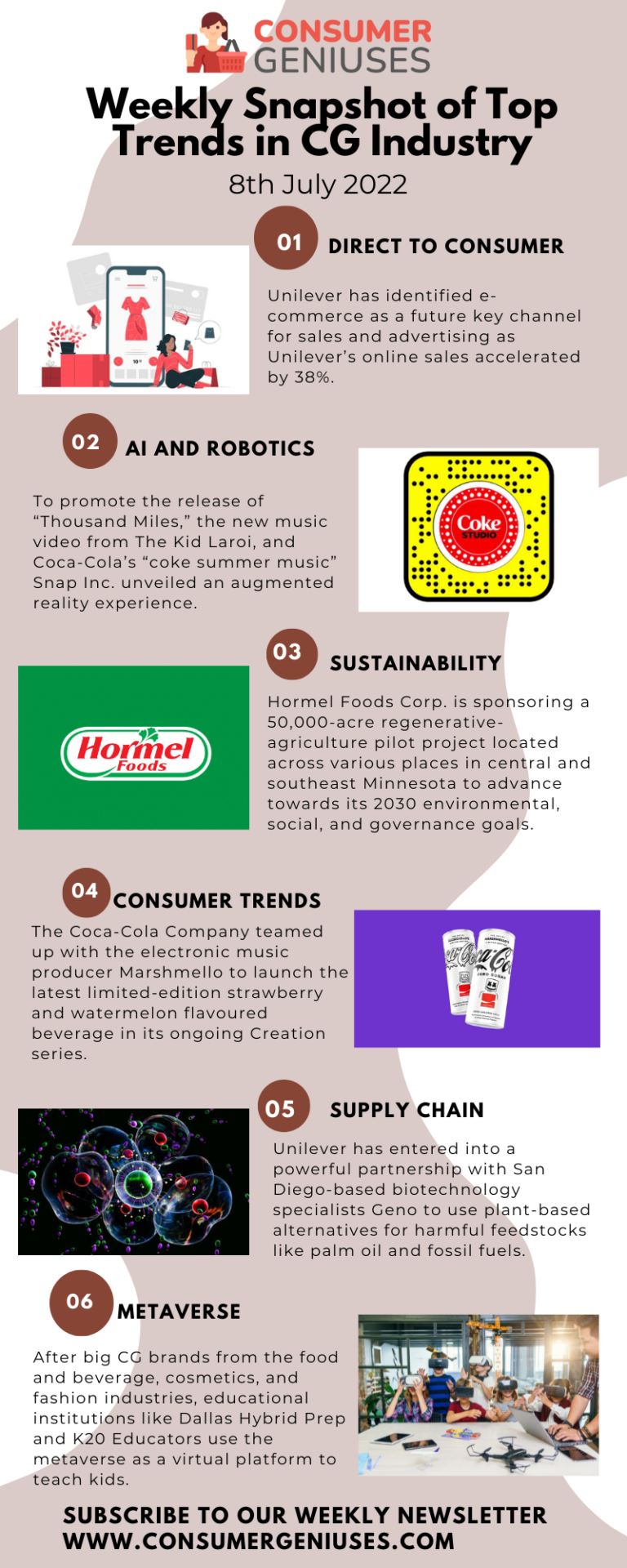
This is the weekly snapshot of top trends from the Consumer Goods industry in the past week (4th July-7th July). We have covered different categories, including:

After the luxury fashion brands like Gucci, Balenciaga, Etro, and Dolce & Gabbana, beauty brands are embracing the metaverse and Web3 space.

NFTs (non-fungible tokens) are unique and different from other virtual currencies, allowing retailers to offer their consumers an exciting shopping experience.

P&G has forayed into the metaverse with BeautySphere, a virtual storytelling world. It is in a bid to influence consumers who are difficult to reach by traditional marketing.

According to The Association for Packaging and Processing Technologies (PMMI), there is an increase in the intelligence, mobility, and sensing capabilities of cobots and robots.

Sprite has decided to forgo its green bottles for white plastic ones from August to reduce waste.

With the help of Rethink, Kraft Heinz recently joined the AI Craiyon, previously called Dall-E 2, as an extension to its “Draw Ketchup” campaign.

Coca-Cola has established a digital academy to up-skill employees, training 500 people in the first year, which has increased productivity by 20%.

The “metaverse”—a term used to refer to the vast, interconnected virtual worlds that are beginning to emerge—could be the next trillion-dollar opportunity for tech companies. The majority of the companies are investing in the development of highly immersive virtual spaces that will allow consumers to earn, spend their money, and invest in products and services.

This is the weekly snapshot of top trends from the Consumer Goods industry in the past week (25th July-29th July). We have covered different categories, including:

It has been estimated that there is a yearly 92 million tons of waste just from the textile industry.

Unilever has ventured into the metaverse with several brands under its name.

After a virtual marathon, now metaverse is set to have a group racing and discoverability event launched by Chobani in partnership with Thinkingbox.

Many CPG companies have faced losses due to shipping and advertising costs after COVID-19 forced them to go online. Some steps can be taken to improve e-commerce.

Recently Tyson Foods released its 2021 (FY21) Sustainability Report according to which it claimed to be working as a part of a global food system that produces accessible, affordable, and nutritious food.

Nestle has decided to expand its cat food plant at Blaney at an expenditure of 90 million dollars.

Gen Z consumers exhibit a higher degree of financial independence and diversity than previous generations.

This is the weekly snapshot of top trends from the Consumer Goods industry in the past week (18th July-22nd July). We have covered different categories, including:

LinkedIn recently launched a list of the five best CPG companies.

Jane Lauder, the Vice President of Estee Lauder Cos., talked about the company’s social media presence.

McCormick & Company has collaborated with Berry Global to make their new McCormick Assorted and Neon Food Colour bottles, much more recyclable and reusable from 100% post-consumer recycled (PCR) plastic, specifically recycled polyethylene terephthalate (rPET).

According to a consensus, the global fashion space is bound to pass $3 trillion in expenditure by 2023.

According to PepsiCo’s 2021 ESG Summary, cutting out sugar, sodium, and saturated fats in foods and drinks is their primary goal.

The good Rewards loyalty programme has been launched with the collaboration of Fetch Rewards and General Mills.

In a bid to replace the aluminium-based barrier, Tetra Pak is testing fibre-based layer in its cartons because aluminium contributes to carbon emissions while being not a favourite with recyclers and for being unable to sustain vegetable juice as evidenced from the 15-month-long consumer test held in Japan in 2020 by the company.

The majority of B2B brands use LinkedIn for marketing and many intend to increase their activity on the website.

Herbert W. Franke, a digital artist visualising math as art, became a sensation with his art piece Mondrian (1979) hosted by blockchain company Tezos at Art Basel.

Unilever shared its strategy about metaverse and Web3 which is still in its infancy.

Walmart has been introducing innovative digital experiences for several years, including augmented reality (AR). In the previous year, the retail giant achieved the following targets.

A number of pioneers in the metaverse have suggested that fashion brands should invest in virtual worlds.

This is the weekly snapshot of top trends from the Consumer Goods industry in the past week (4th July-7th July). We have covered different categories, including:

After the luxury fashion brands like Gucci, Balenciaga, Etro, and Dolce & Gabbana, beauty brands are embracing the metaverse and Web3 space.

NFTs (non-fungible tokens) are unique and different from other virtual currencies, allowing retailers to offer their consumers an exciting shopping experience.
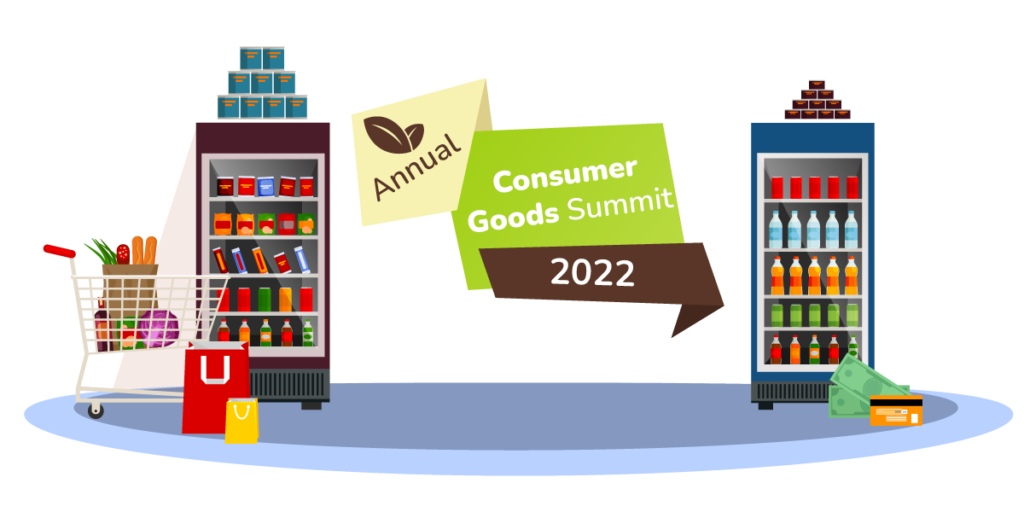
Consumer Goods industry will surpass $15T globally by 2025. However the old business model of mass distribution is about to become obsolete. Digital Transformation, Millennials and Gen Z effect, Direct to Consumer and Post-Covid World are going to reshape the winning formula for the new era CG industry. Our weekly newsletter covers global innovations and disruptions in CG industry.
ConsumerGeniuses is managed by IndustryGeniuses (A place where industries meet innovation). We are rolling out content platforms for the world’s hottest industries such as Food & Grocery Retail, Consumer Goods and Healthcare. For each of these key industries, we support Tech Startups and Industry Disruptors as they roll out next generation digital initiatives.
IndustryGeniuses team brings practical domain knowledge of working with 300+ tech startups and brands over the past decade.